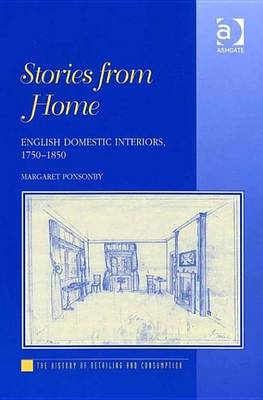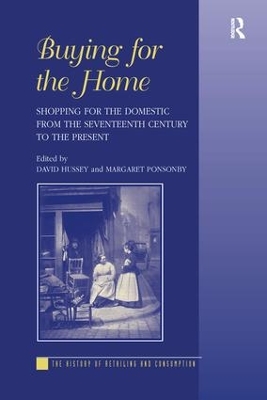History of Retailing and Consumption
3 total works
The Single Homemaker and Material Culture in the Long Eighteenth Century
by David Hussey and Margaret Ponsonby
Published 1 May 2012
The Single Homemaker and Material Culture in the Long Eighteenth Century represents a new synthesis of gender history and material culture studies. It seeks to analyse the lives and cultural expression of single men and women from 1650 to 1850 within the main focus of domestic activity, the home. Whilst there is much scholarly interest in singleness and a raft of literature on the construction and apprehension of the home, no other book has sought to bring these discrete studies together. Similarly, scholarly work has been limited in evaluating gendered consumption practices during the long eighteenth century because of an emphasis on the homes of families. Analysing the practices of single people emphasises the differences, but also amplifies the similarities, in their strategies of domestic life.
Most homes in the past were not elite, wealthy interiors complete with high fashion furnishings, designed by well-known architects and designers, as many domestic histories often seem to have assumed. As this book makes clear, there were in fact an enormous variety of house interiors in England during the period 1750-1850, reflecting the location, status and gender of particular householders, as well as their changing attitudes, tastes and aspirations. By focusing on non-metropolitan homes, which represented the majority of households in England, this study highlights the need for historians to look beyond prevailing attitudes that often reduce interiors to generic descriptions based on high fashions of the decorative arts. Instead it shows how numerous social and cultural influences affected the manner in which homes were furnished and decorated. Issues such as the availability of goods, gender, regional taste, income, the second-hand market, changing notions of privacy and household hierarchies and print culture, could all have a significant impact on domestic furnishing. The study ends with a discussion of how domestic interiors of historic properties have been presented and displayed in modern times, highlighting how competing notions of the past can cloud as well as illuminate the issue. Combining cultural history and qualitative analysis of evidence, this book presents a new way of looking at 'ordinary' and 'provincial' homes that enriches our understanding of English domestic life of the late eighteenth and early nineteenth centuries.
Buying for the Home is a book about the experiences and also the polarities of shopping and the home. It analyses the ways in which the agencies and discourses of the retail environment mesh with the processes of physical and imaginative re-creation that constitute the domestic space, teasing out the negotiations and interactions that mediate this key arena. The study examines how the strategies of retailers were both arbitrated by and negotiated through the actions and desires of the homemaker as consumer. Drawing on the recent CHORD (Centre for the History of Retail and Distribution) colloquium on shopping and the domestic environment and including two specially commissioned pieces, the book draws on a wide selection of interdisciplinary work from established scholars and new researchers. Organised around four key themes - retail arenas and the everyday; identity and lifestyle; fashioning domestic space; and cultural practice - the ten case studies cover a range of cultural encounters and locations from the seventeenth to the late twentieth century. Through these interdisciplinary but linked case studies, Buying for the Home forces us to consider the fractured space that existed between the world of goods and the middle- and working-class home and in so doing interrogate how middle-class and plebeian homemakers view, imagine and ultimately occupy their domestic spaces in early-modern, modern and post-modern society.


